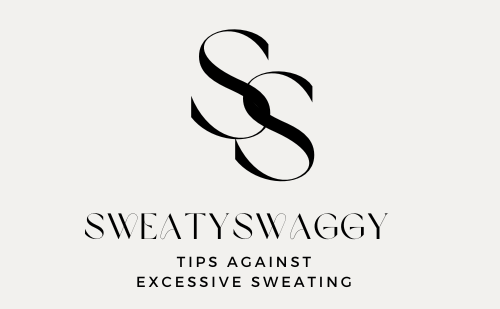Exciting News fellow sufferers! The U.S. Food and Drug Administration (FDA) has just approved a fabulous new treatment for excessive underarm sweating (primary axillary hyperhidrosis) for adults and children aged 9 and above and SweatHelp reported it.
What makes this even better? It’s a simple, at-home topical treatment that’s applied right before bed—no needles, no aluminum, just an easy and gentle solution. #KnowSweat
Introducing Sofdra, created by Botanix Pharmaceuticals, this breakthrough is a prescription anticholinergic gel. It’s the first new, self-applied, at-home treatment for hyperhidrosis to be approved in the U.S. since 2018.
I’m excited to see it in action once it’s available for ordering. Until then here is the paper from Adams J. Bradon that covers the science behind Sofdra.
Sofdra: More Than Just an Antiperspirant
While it’s a topical gel applied to your underarms, Sofdra is not your typical antiperspirant. This is a medical-grade treatment that works much more powerfully. It doesn’t contain aluminum and instead uses sofpironium, an anticholinergic ingredient that prevents sweat glands from receiving the signal to produce sweat. In simple terms, it stops the glands from being activated. Since it’s applied to the skin under your arms, Sofdra specifically targets those sweat glands for maximum results.
If you’ve ever taken oral anticholinergic medications to manage sweating, you may be familiar with uncomfortable side effects like dry mouth, muscle cramps, or urinary issues. The good news is that, since Sofdra is applied to your skin, the likelihood of those side effects is reduced. However, it’s important to use Sofdra exactly as directed to avoid any potential risks. Applying it to areas other than your underarms or combining it with other anticholinergic treatments can increase the chance of side effects.
Fun fact: Sofdra was initially developed by Brickell Biotech, and then sold to Botanix in 2022.
How to Use Sofdra
Applying Sofdra is easy! You’ll use a special applicator right before bed. The applicator is designed to keep the medication off your hands, which is important because you don’t want it to transfer to more sensitive areas like your mouth, nose, or eyes. So, following the steps carefully will help minimize side effects and make the whole process simple and safe.
Enthusiastic Response from the Community
“We’re over the moon about Sofdra’s approval,” says Lisa J. Pieretti, Executive Director of the International Hyperhidrosis Society (IHhS). “This could truly be a game-changer for so many people, and we’re proud that our patient community was involved in the studies that helped bring us here. While everyone’s hyperhidrosis experience is different, this is definitely a huge step forward in treatment options.”
Dr. David Pariser, founding board member of IHhS and former president of the American Academy of Dermatology, adds, “Sofdra’s approval is wonderful news. Studies show it’s effective and user-friendly for most people. I can already think of so many individuals who will appreciate this self-managed, at-home option.”
Sofdra Study Highlights
Before its FDA approval, Sofdra went through extensive clinical testing. In one study involving 300 participants over almost a year, and two shorter studies involving more than 700 participants over 2 months, all volunteers (aged 9 and older) had been diagnosed with primary axillary hyperhidrosis.
Key results showed:
- 85% of participants using Sofdra experienced a meaningful reduction in excessive sweating.
- More than 60% saw their sweat production cut by half or more.
The most common side effects included:
- Blurred vision (19%)
- Dry mouth (17%)
- Itching in the underarm area (15%)
- Swelling or irritation (11%)
- Underarm pain (8%)
- Redness (8%)
- Dilated pupils (5%)
- Dry eyes (4%)
- Urinary retention (4%)
In studies involving children (ages 9 to 16) with excessive underarm sweating, the results were also positive, with no severe side effects reported. The majority of participants said their sweating had reduced by around 65%, though a small number discontinued use due to mild side effects like dry mouth or rash.
Who Should Not Use Sofdra?
Sofdra may not be suitable for everyone, particularly those with certain medical conditions that can be aggravated by anticholinergic medications, such as:
- Glaucoma
- Severe ulcerative colitis (UC)
- Certain serious bowel issues related to severe UC
- Myasthenia gravis
- Sjogren’s syndrome
There are also ongoing discussions about the long-term use of anticholinergics in older adults and possible links to dementia. Since Sofdra is a topical treatment and not taken orally, these concerns may be lessened, but older users should still discuss it with their doctor.
Essential Do’s and Don’ts for Using Sofdra
Do:
- Apply Sofdra just before bed.
- Wear a sleeveless top or take off your shirt/bra before applying.
- Dry your underarms before application.
- Use the provided applicator to apply the gel.
- Let Sofdra dry completely (about 5 minutes) before getting dressed.
- Clean the applicator and wash your hands after applying.
- Keep Sofdra on your underarms for at least 8 hours.
- Contact your healthcare provider if you experience side effects like dry mouth, blurred vision, or irritated skin.
Don’t:
- Apply Sofdra to broken skin.
- Use your hands to apply the gel.
- Smoke or go near an open flame until Sofdra is fully dry—it’s flammable.
- Touch your underarms or get dressed until the gel has dried (about 5 minutes).
- Shave, shower, or exercise for at least 8 hours after applying.
FAQs About Underarm Hair
Yes, you can use Sofdra even if you have underarm hair or stubble. Just wait at least 8 hours after application before shaving.
Stay tuned for more updates about Sofdra, including when it will be available, right here on our news blog!




